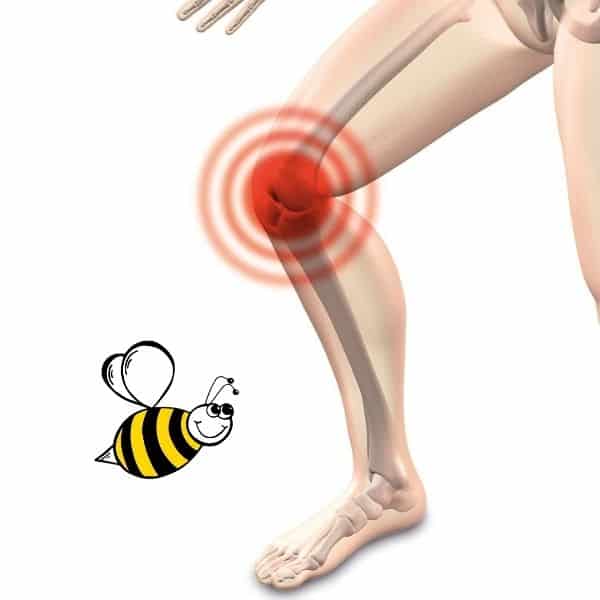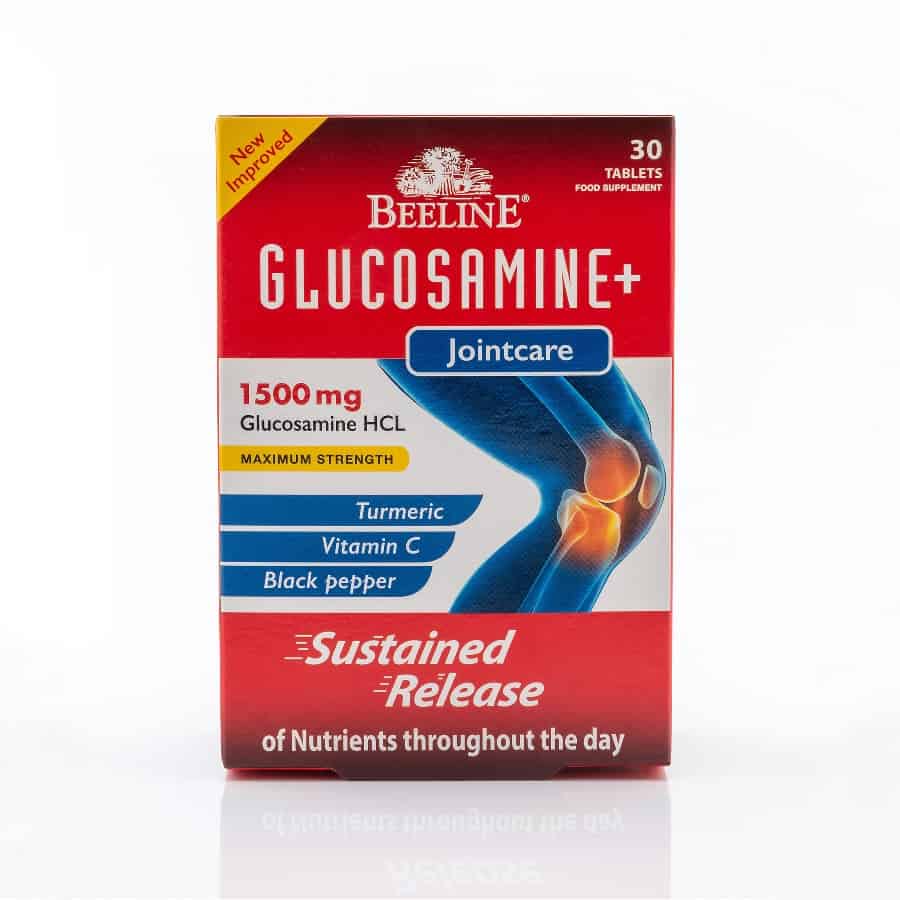Glucosamine Benefits, Types, Sources and Supplements
Glucosamine is an amino sugar that is naturally occurring in our bodies. The benefits of glucosamine include helping support healthy joints, bones, cartilage, muscles, tendons and ligaments. As we age, our production of glucosamine slows down. Exercise can also lead to joint damage. Glucosamine supplements are the main dietary source.
What is Glucosamine?
Glucosamine, what is it? Glucosamine is naturally occurring in our bodies. It is an amino sugar compound, which is a combination of natural chemicals. The substance is found in our bodies within our joint fluid and cartilage. It also occurs in some animal bones, fungi and shellfish.
It has health and well-being benefits. Glucosamine can help support healthy joints, bones, muscles, tendons and ligaments.
What is Glucosamine Good for?
Glucosamine is used by our bodies to build and repair cartilage, tendons, ligaments, and the synovial fluid around our joints.
What glucosamine is good for is supporting healthy joints, bones, cartilage, muscles, tendons and ligaments.
Is Glucosamine Good for Joints
Glucosamine is good for joints. Glucosamine supplements are generally taken by people with joint pain, osteoarthritis and arthritis. It may also be taken by most adults to maintain joint mobility.
What is Cartilage?
Cartilage is a flexible connective tissue within the joints of our bodies between the bones. Healthy cartilage protects bones by providing a buffer to shield bones hitting against each other. It makes it easier for us to move and be flexible.
What are Ligaments?
Ligaments connect one bone to another within the body.
What are Tendons?
Tendons connect muscles to bones.
Types of Glucosamine
There are a number of different types of glucosamine. These forms include:
- Glucosamine sulfate is a natural sugar in and around the tissues and fluid of joints.
- Glucosamine hydrochloride is a purer form that is more concentrated than the sulfate form.
- N-acetyl glucosamine is found in the outer shells of shellfish. It has different effects to the other forms of glucosamine.
Which Glucosamine is Better
Both glucosamine hydrochloride and glucosamine sulfate are considered effective. Beeline Healthcare use Glucosamine HCL (hydrochloride), as it is gentle on the stomach.
Why Take Glucosamine Supplements?
As we grow older, the production of glucosamine slows down.
Also, while we exercise, joints experience additional wear and tear. This can lead to damage and degeneration of our joints and bones.
Glucosamine supplements are used to help support joint and bone health, and fight age-related health conditions including osteoarthritis.
What is Osteoarthritis?
Osteoarthritis is a form of arthritis that damages our joints. It develops when the cartilage around our bones wears down. This happens over time, and impacts many of us as we get older.
Generally, osteoarthritis appears in the joints of knees, hips, spine and hands. It causes pain, inflammation, swelling, loss of flexibility and stiffness in these joints. Osteoarthritis can impact quality of life and the ability to move freely.
13 Benefits of Taking Glucosamine
So, what does glucosamine do for the body? There are lots of positive side effects for the body.
The health benefits of glucosamine include:
- Helps maintain healthy joints and bones. Glucosamine is essential for maintaining joint mobility and flexibility.
- Enables the body to make chemicals that build and repair cartilage, tendons, ligaments, and the synovial fluid around our joints.
- Decreases joint pain and arthritis pain.
- Reduces inflammation in the body.
- May help treat osteoarthritis by reducing pain and improving function.
- Lowers the risk of a number of chronic conditions.
- Glucosamine HCL helps cartilage and synovial fluid regeneration.
- Glucosamine HCL decreases symptoms of joint degenerative illness.
- Helps treat interstitial cystitis, which is a chronic condition that causes bladder pressure and pain.
- Potentially reducing inflammation associated with inflammatory bowel disease.
- May help relieve pain and inflammation associated with temporomandibular joint (TMJ) disorders.
- A 2011 University of California – Irvine study featured in the Journal of Biological Chemistry, states that supplements may help suppresses multiple sclerosis attacks.
- May improve knee mobility. A 2007 study of male athletes that suffered an acute knee injury showed significant improvement in knee flexion and extension with glucosamine supplementation.

Sources of Glucosamine
Glucosamine is naturally occurring. Although glucosamine is found in the shells of shellfish, there are no natural sources of glucosamine in food. Supplements are the dietary source of glucosamine.
Glucosamine Supplements
Dietary supplements are a source of glucosamine to support health and wellbeing. Beeline Healthcare have a range of glucosamine supplements to provide you with the recommended daily allowance.
Beeline Glucosamine , Turmeric Vitamin C & Black Pepper Sustained Release Tablets are specially formulated to help joints, bones, muscles, tendons and ligaments. The supplement contains maximum strength Glucosamine, and utilises sustained release technology for gradual release of the benefits throughout the day.
Beeline Glucosamine ,Turmeric Chondroitin, Collagen, Vitamin C, Manganese & Nettle Leaf Effervescent Tablets support the healthy function of cartilage, bones and joints in an orange flavoured drink.
Beeline Glucosamine + Organic Marine Minerals, Turmeric, Vitamin C + Black Pepper Tablets improves joint mobility for healthy joints, muscles, tendons and ligaments. Turmeric also supports joints and bones, while black pepper enhances the absorption of Turmeric. Vitamin C supports bones and cartilage function, collagen formation, and reduces fatigue. SeaCal provides calcium and other essential minerals to support bone health.
Glucosamine Dose
How much glucosamine should I take? It is always recommended to talk to your doctor about what dose they recommend for specific conditions. Your body weight can impact recommended dosage.
The usual daily dosage of glucosamine HCL is between 500mg and 1500mg per day.
Are There Negative Side Effects of Glucosamine?
Glucosamine supports good joint care and bone health.
Negative side effects of taking glucosamine supplements are generally mild. These could include upset stomach, nausea, heartburn, diarrhoea or constipation.
Beeline Healthcare glucosamine supplements use Glucosamine HCL, which is gentle on the stomach to reduce any negative side effects.
How to Take Glucosamine
Beeline Glucosamine supplements should be taken once a day.
Beeline Glucosamine + Turmeric Tablets should be swallowed with a glass of water.
Beeline Glucosamine + Turmeric Effervescent Tablets are dissolved in a glass of water to form a liquid drink.
Questions Glucosamine
- Is glucosamine good for joints?
Yes, glucosamine is good for joints. Glucosamine helps support healthy joints, bones, cartilage, muscles, tendons and ligaments.
- Are glucosamine supplements safe?Yes, glucosamine supplements safe. That is providing that they are from a reputable brand such as Beeline Healthcare that use the best quality ingredients, provide the recommended daily dose and that your doctor says it is safe for you to take a supplement.
- What foods are high in glucosamine?While found in the shells of shellfish, there are no natural sources of glucosamine in food. Supplements are a dietary source of glucosamine.


